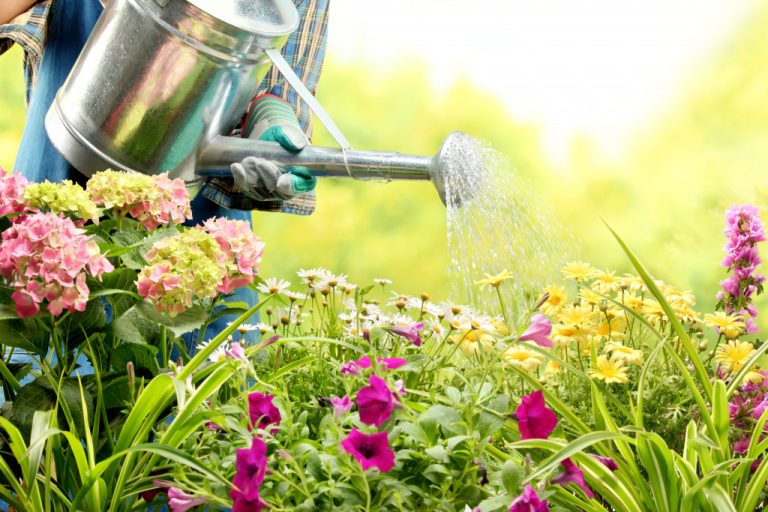- Gardening promotes physical and mental health and requires careful consideration of soil preparation, plant selection, and regular maintenance.
- Organic matter and compost enrich the soil, while proper environmental preparation includes light, temperature, and water considerations.
- Choosing suitable plants, like organic vegetable seeds, native plants, and drought-tolerant plants, can enhance garden health and sustainability.
- Mastering maintenance tasks like watering, weeding, pruning, and fertilizing ensures plant longevity and productivity, leading to a bountiful harvest.
Gardening at home carries many benefits that extend beyond the aesthetic appeal. Notably, a study by the National Institutes of Health found that gardening activities for just 2.5 hours a week can reduce the risk of obesity by 66% and diabetes by 50%. Also, according to a survey by the National Gardening Association, 79% of U.S. households report experiencing stress relief and relaxation from gardening. Furthermore, growing your fruits and vegetables can lead to healthier eating habits. A report from the CDC states that home gardeners consume 40% more fresh produce than non-gardeners. Thus, maintaining a healthy garden at home can contribute significantly to physical health, mental well-being, and a balanced diet.
However, building a healthy garden at home will be challenging if you do not consider crucial factors. Here are a few things to keep in mind when planning your garden:
Preparing the Soil and Environment
When embarking on building a healthy garden, the preparation of the soil and environment is paramount. The fertility and structure of the soil are crucial determinants of your garden’s health and productivity. Therefore, enriching your soil with organic matter and compost can deliver essential nutrients to your plants and improve soil texture, promoting plant growth and resilience. Healthy soil also encourages beneficial microbial activity, critical to nutrient cycling and disease suppression.
Likewise, preparing the garden environment involves environmental considerations such as light, temperature, and water availability, which should be tailored to the specific needs of your plants. Proper positioning of plants according to their sunlight requirements, ensuring adequate drainage to prevent waterlogging, and providing shelter from extreme weather conditions can create an optimal environment for plant growth. You are laying a solid foundation for a flourishing, healthy garden by diligently preparing the soil and climate.
A garden bed will benefit from a good mulch cover to prevent weed growth, conserve moisture, and regulate soil temperature. Mulching can be done with materials like straw, bark chips, or leaves, depending on the type of plant and soil conditions in your garden. Besides providing multiple benefits to your plants’ health and yield, mulch adds organic matter to the soil as it decomposes. As a result, it replenishes the soil’s nutrients and organic content, contributing to long-term garden sustainability.
Choosing Suitable Plants

A healthy garden might seem like an ideal habitat for all plants to thrive. However, it would be best if you were careful about the types of plants you choose to grow in your garden. Here are a few examples to consider for your garden:
Organic Vegetable Seeds
Choosing suitable plants is one of the most critical steps in building a healthy garden. Planting organic vegetable seeds, for example, are a fantastic choice for any home garden. These seeds have not been treated with synthetic pesticides or genetically modified, ensuring your vegetables are 100% natural. Some popular organic vegetable seeds that can be quickly grown at home include tomatoes, spinach, and zucchini.
Native Plants
Native plants are another excellent choice for a home garden. They adapt well to the local climate and soil conditions, requiring less maintenance and water than non-native species. Furthermore, they contribute to local biodiversity, supporting pollinators and other wildlife. Examples of native plants vary by region, so it’s important to research which species are native to your area.
Drought-Tolerant Plants
If you live in a region with low rainfall, drought-tolerant plants can be a practical choice for your garden. These plants have adaptations such as deep roots or waxy leaves that help them survive in dry conditions, reducing the need for frequent watering. Examples of drought-tolerant plants include succulents, lavender, and Russian sage.
Pollinator-Friendly Plants
Consider incorporating pollinator-friendly plants to support local pollinators and contribute to a healthy ecosystem. These plants attract bees, butterflies, and other beneficial insects, which can aid in pollinating your vegetables and other plants. Examples of pollinator-friendly plants include sunflowers, wild roses, and butterfly bushes.
Mastering Garden Maintenance

Mastering garden maintenance tasks is fundamental to preserving a healthy and thriving garden. Regular and appropriate care ensures your plants’ longevity and productivity. Maintenance includes activities such as watering, weeding, pruning, and fertilizing, each with unique significance.
Watering, as an example, must be done with consideration for plant species and climatic conditions. Some plants require more water than others, and overwatering can lead to root rot and other plant diseases. Weeding is necessary to prevent nutrient competition, thus allowing your garden plants to have the essential nutrients.
Pruning helps manage plant size, induces better plant shape, and encourages flowering and fruiting. Meanwhile, regular fertilization replenishes the soil’s nutrient content, promoting healthy plant growth. Therefore, understanding and implementing these tasks will ensure your garden remains healthy and vibrant, leading to a bountiful harvest.
Final Thoughts
Creating and maintaining a healthy garden can bring many benefits, from promoting physical and mental health to providing fresh produce for your meals. By preparing the soil and environment, choosing suitable plants, and mastering garden maintenance, you can lay the groundwork for a thriving garden. Remember to consider pest control methods and sustainable gardening practices to enhance your garden’s health further. With diligence and care, your garden can be a source of joy, relaxation, and nourishment for you and the environment.
